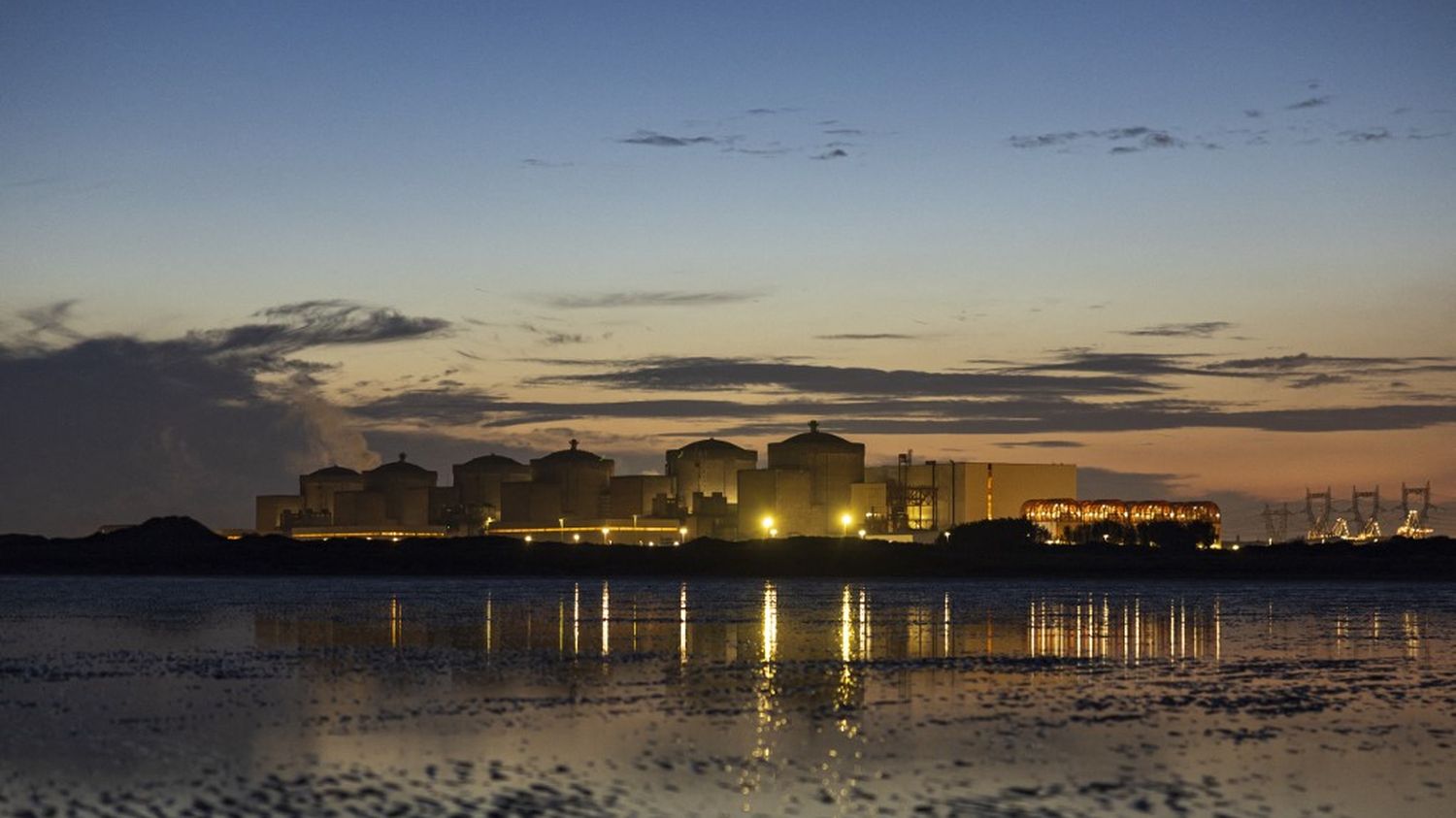In a new report, the NGO argues that the infrastructure of Gravelines (North) faces the risk of finding itself stuck in water by 2100.

Published
Reading time: 4 min

Nuclear power plants soon to be trapped by water? Greenpeace France warns of the vulnerability of these infrastructures to marine submersion, in a report published Thursday October 3. “For the moment, the impacts of extreme climatic events on nuclear power plants are barely visible in France and have mainly affected electricity production capacities with the slowdown or even shutdown of nuclear reactors during waves of strong heat”underlines the NGO. But their precariousness in the face of climate change “will get worse as it gets worse”estimates Greenpeace France.
Among the threats linked to rising temperatures: rising water levels, fueled by melting ice caps and warming oceans. This phenomenon “is worrying for nuclear power plants installed near the coasts, representing around 41% of the world’s fleet”including five French sites, writes Greenpeace France. Because the rise in sea level increases the risk of marine submersion, i.e. the temporary flooding of a coastal area by the sea. This phenomenon “is underestimated even though it is accentuated by the intensification of extreme climatic events for power plants located by the sea”continues the NGO.
To illustrate the risk, Greenpeace France looked at the Gravelines nuclear site, in the North, which is to accommodate two new new generation reactors (EPR 2). The NGO modeled its projections of the risk of submersion using the scenario of a France at +4°C by 2100, developed by the IPCC and used by the government for its adaptation plan. In this case, experts estimate that the sea level rise will be between 0.98 and 1.88 meters.
Result, according to Greenpeace France: “In 2100, the entire Gravelines power plant site may find itself temporarily below sea level”at the time of high tides and when the conditions for a centennial surge are met, i.e. a rise in sea level compared to usual, which has a one in 100 chance of occurring each year . “The power plant will be particularly exposed in the event of an extreme climatic event and storm surge, basing its safety solely on the robustness and good sizing of the protection devices surrounding it”continues the association.
The flooding of the Blayais power station (Gironde) in 1999 led to “EDF to carry out reinforcement work on the peripheral dike and a global re-examination of the principles of protection of power plants”explains the Court of Auditors in its latest report on the adaptation of nuclear parks to climate change. In Gravelines, this protection system includes a four-meter-high dike, watertight doors and sheet piles. But in the event of marine submersion, “how long can the safety of the Gravelines power plant be ensured if it becomes an island?”asks Greenpeace France.
The scenario on which Greenpeace France bases its modeling is not the worst. “A rise in global mean sea level above the likely range – approaching 2 m by 2100 and 5 m by 2150 under a 2000 gas emissions scenario very high greenhouse effect – cannot be ruled out due to deep uncertainty in ice sheet processes”writes the IPCC in its sixth report.
For its installation of EPR 2 in Penly (Seine-Maritime), EDF ensures in its file on the project that a “a design margin of one meter is currently taken (…) to cover the impacts of climate change on sea level rise”. Far away then “ofs current worst-case scenarios considered by scientists regarding the speed of sea level rise”, points out Greenpeace. An opinion also shared by the Court of Auditors, which underlines “that the margin planned by EDF is insufficient to deal with the possible effects of an acceleration in the melting of the ice caps”.
On the question of the Gravelines EPR 2, the installation of which is the subject of a public consultation until January 17, EDF says it takes into account this margin of one meter “in the design of the project and in particular in the definition of the height of the platform [où seront installés les réacteurs] eleven meters away”. For Greenpeace, the company “must document how it estimated the maximum possible water height in the next century” And “demonstrate that it can protect the power plant against this maximum water level for the entire lifespan of the infrastructure”.
The association also ensures that“no environmental impact study including an analysis of the vulnerability of new nuclear reactors to the impacts of climate change has, to date, been communicated by EDF”that is to say made public. Already in 2023, the Environmental Authority, an independent body which gives its opinion on the assessment of the environmental impact of a project, considered that “both the technical and environmental analysis of the choice of the nuclear reactor and the possible sites for the installation of the first six EPR 2 reactors, or even the following ones, should be part of a plan subject to environmental assessment.”
